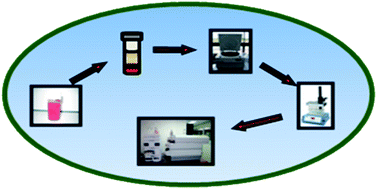The group of compounds commonly called endocrine-disrupting chemicals covers a wide range of synthetic and natural substances able to alter the normal hormone function of wildlife and humans, consequently causing adverse health effects. Bisphenol A (BPA) and its chlorinated derivatives, benzophenones (BPs) and parabens (PBs), belong to this group of compounds. In this work, we propose a multiclass ultra-high-performance liquid chromatography-tandem mass spectrometry (UHPLC–MS/MS) method to determine BPA, its four chlorinated derivatives (monochloro-, dichloro-, trichloro- and tetrachloro-bisphenol A), six BPs (benzophenone-1, benzophenone-2, benzophenone-3, benzophenone-6, benzophenone-8 and 4-hidroxybenzophenone) and four PBs (methylparaben, ethylparaben, propylparaben and butylparaben) in human placental tissue samples. The method involves an extraction step of the analytes from the samples using ethyl acetate, followed by a clean-up step by centrifugation prior to their quantification by UHPLC–MS/MS using an atmospheric pressure chemical ionization (APCI) interface in the negative mode. Deuterated bisphenol A (BPA-d16) was used as surrogate. The limits of detection (LOD) found ranged from 0.03 to 0.6 ng g−1, the limits of quantification (LOQ) from 0.1 to 1.4 ng g−1, while inter- and intra-day variability was under 8%. The method was validated using matrix-matched calibration standard and a spike recovery assay. Recovery rates for spiked samples ranged from 95% to 106%. This method was satisfactorily applied to the determination of these compounds in 50 placental tissue samples collected from women who live in the province of Granada (Spain).


 Please wait while we load your content...
Please wait while we load your content...